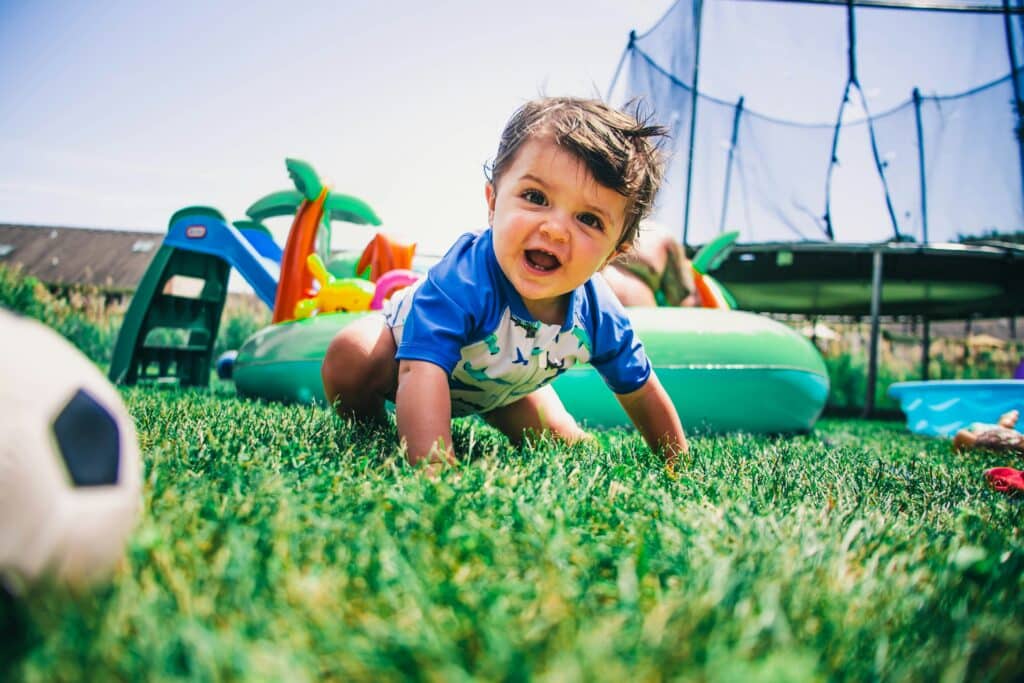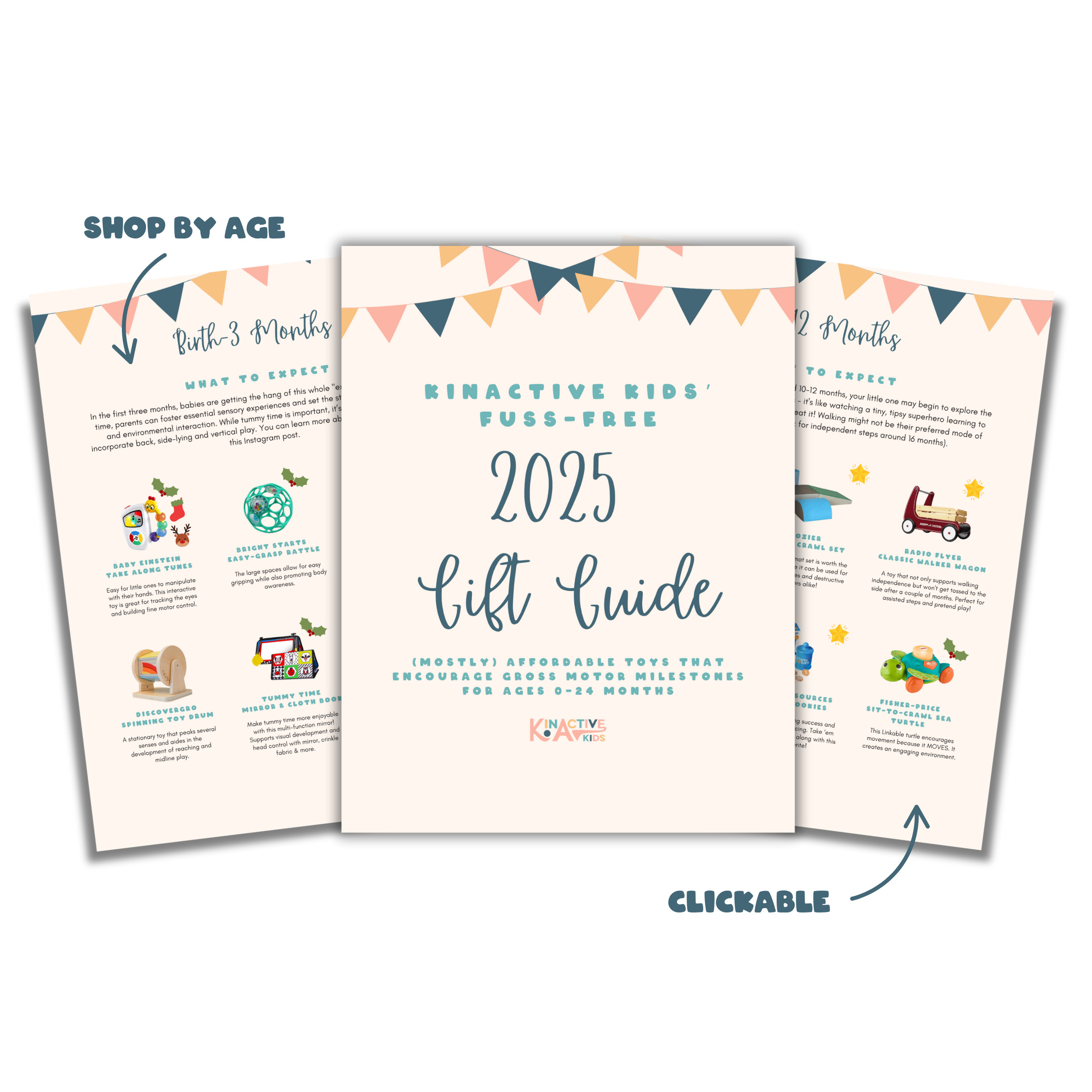10 Best Gross Motor Skill Activities for Infants

Wondering how to support your little one’s growth and development? The answer lies in engaging them in gross motor skill activities! These fun and beneficial activities can easily be done at home and play a crucial role in your child’s physical development. Let’s dive into the importance of gross motor skills and explore ten enjoyable activities that will help your infant thrive.

What are Gross Motor Skills?
Gross motor skills involve large movements that utilize the major muscle groups of the body. These include skills like sitting, crawling, walking, and jumping. Your child will gradually develop these skills over their first few years of life, laying the foundation for greater independence and physical capability.
While you may have heard of fine motor skills—those intricate movements that involve smaller muscle groups like fingers—it’s essential to note that gross motor skills are developed first. Mastering gross motor skills is critical because they provide the stability and coordination necessary for fine motor skills to follow.
Now, let’s get into the fun part—activities that promote gross motor skill development in infants!
10 Best Gross Motor Skill Activities for Infants
1. Tummy Time
Tummy time is a foundational activity for gross motor skill development. Placing your little one on their tummy encourages them to lift their head, strengthening their neck and core muscles. Start with short sessions of about two minutes to prevent fatigue. Use bright toys or interesting sounds to capture their attention and motivate them to lift their head higher.
2. Arm Pushing
Taking tummy time a step further, arm pushing helps enhance your infant’s arm strength and core stability. While your child is lying on their stomach, encourage them to push up using their arms. This not only builds arm strength but also helps develop balance and coordination. You might even join in, demonstrating the motion to inspire them!
3. Head Turning
Another simple yet effective gross motor skill activity is head turning. This can be done while your baby is on their tummy or back. To encourage head movement, hold a toy just out of reach to one side. As they turn their head to follow the toy, you’re not only promoting neck strength but also enhancing their visual tracking skills. Remember to switch sides to ensure balanced development!
4. Rolling
Rolling is a delightful way to build arm strength and hand-eye coordination. Start by rolling a soft ball towards your infant and encourage them to roll it back to you. Initially, they may swat or push the ball away, but with practice, they’ll learn to engage and roll it back. This activity also enhances their spatial awareness as they learn to coordinate their movements.
5. Kicking
When your baby lies on their back, it’s time for some kicking fun! This activity engages their leg muscles and promotes core stability. To make it more engaging, hold a colorful toy above them, encouraging them to kick while reaching for it. You might even join in with a fun song to keep the energy lively!
6. Sitting Independently

Around 6-12 months, your baby will be ready to practice sitting up without support. Position them in a seated stance and provide a variety of textured toys in front of them. This not only entertains them but also promotes balance and core strength. The more they practice sitting independently, the more confident they’ll become!
7. Crawling
Crawling is a significant milestone in your child’s journey toward independence. To encourage crawling, sit or stand a short distance away from your baby, holding a favorite toy or calling their name. Your little one will be motivated to move towards you. If your baby is currently army crawling, check out our additional resources for tips on transitioning to hands-and-knees crawling.
8. Pushing and Pulling
Introducing toys designed for pushing and pulling can be incredibly beneficial. Toys with strings or those that your baby can push along help develop their stamina and resistance. Demonstrate how to use the toy before letting them give it a try. This not only aids in gross motor development but also adds a layer of fun to their playtime!
9. Pull Up to Stand
As your infant grows stronger, you can encourage them to pull up to a standing position. Place them near a sturdy piece of furniture—like a couch—and guide their hands to the surface. Cheer them on as they pull themselves up! This activity strengthens both arm and leg muscles, setting the stage for future walking skills.
10. Standing Without Support
For older infants, typically around 8-12 months, practicing standing without support is an exciting challenge. Allow them to stand on their own, even if it’s just for a few seconds. This activity builds endurance and core strength, essential components for walking and exploring the world around them.
Need More Support?
Parenting an infant can feel overwhelming, especially with the wealth of information about developmental milestones. At KinActive, we understand this challenge. That’s why we’ve created the KinActive Community—a supportive space filled with masterclasses on gross motor skills and other essential topics. Here, you can connect with fellow parents, share experiences, and access valuable resources to help you navigate this exciting phase of your child’s life.
—
Engaging in these gross motor skill activities can be a joyful and rewarding experience for both you and your baby. Remember, every little effort counts and your active involvement will lay a strong foundation for your child’s future physical abilities. So, roll out the play mats, gather some toys, and enjoy these moments of play and discovery together!



